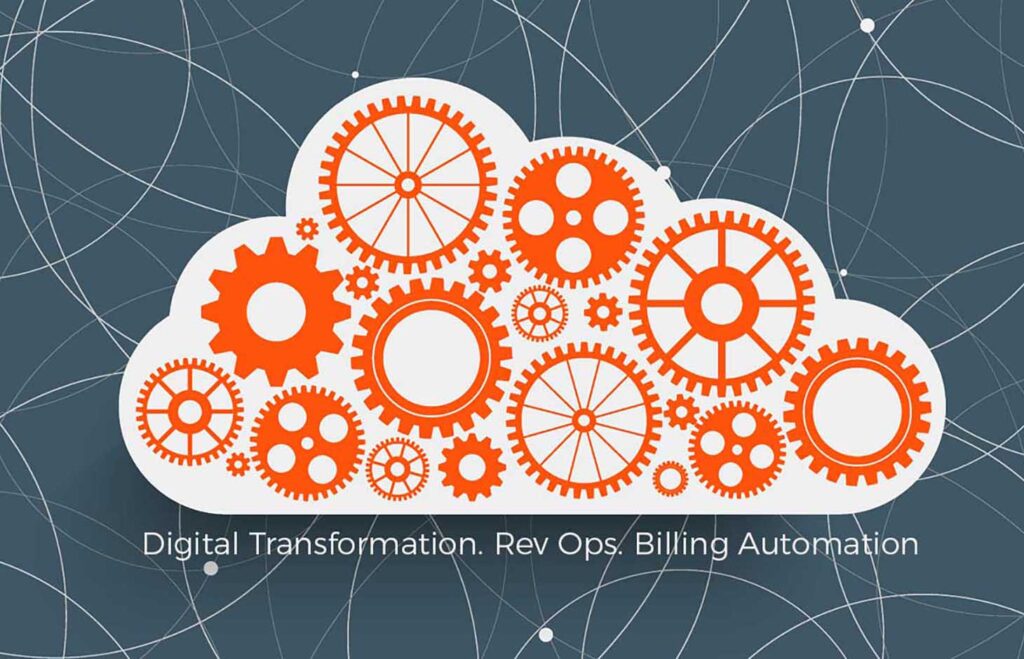Software businesses have experienced a tremendous amount of transformation over the past two decades. The entire business landscape evolved from a traditional one-time-purchase approach each time an update was released to one that offers flexible subscriptions for continually updating software solutions.
It’s the age of software as a service (SaaS) and other subscription-based businesses.
With smaller, consistent payments, solutions with a higher price point are now more affordable to customers of all sizes. And in return, software businesses have consistent, recurring revenue.
Experts anticipate the global SaaS market will experience a 9.22% compound annual growth rate between 2019 and 2023, with a net worth of more than $60 billion.
As SaaS businesses continue to thrive and scale while addressing evolving customer demands, their own needs change as well. Digital transformation and optimized revenue operations are fundamental to adapting to this rapidly moving business landscape. To accommodate their changing needs, SaaS businesses need to deploy the right business toolset.
Billing and invoicing become more complex as your customer base swells. In addition to the sheer volume of billing, multiple pricing strategies are introduced as you add new features and services and as older features and services get upgraded and sometimes even phased out.
Customers’ needs change as well, as they continue to look for more flexible SaaS solutions with plans that can upgrade or downgrade instantaneously to meet those needs.
Too soon, invoicing and billing for SaaS with manual and legacy SaaS billing solutions starts to show cracks and shortcomings. They’re also prone to human errors that snowball as businesses grow, and it becomes difficult to scale at the speed and complexity the competitive market requires.
Generally, this is when scaling SaaS businesses realize they need a better solution to manage their recurring billing.
Demystifying SaaS Customer Management and Recurring Billing Software
Many startups, in particular, don’t immediately see billing and invoicing software as necessary for small businesses—since they don’t have many customers, they can send invoices manually and save that money.
But billing software is important for subscription businesses at any stage of growth. And those that aren’t early adopters might end up wishing they’d sprung for it sooner.
A recurring billing platform does more than just send recurring invoices, process credit card payments, and make sure you get paid—though these are obviously important features.
It’s a comprehensive solution that also helps businesses manage and streamline the entire customer experience through their complete customer lifecycle. This can include the following.
Signups
With customer relationship management (CRM) integrations and self-service portals, customers can sign up for subscriptions without tedious, duplicated efforts, and—if you choose—even without a single call to your customer service department.
Updates
Additionally, changes can be made to customer accounts seamlessly, including plan upgrades, plan downgrades, and add-ons, whether in a bulk action or at a customer level. And those will be reflected immediately within the billing system.
Customers can even be given the option to perform their own updates through a self-service portal, further enhancing their individual service flexibility and reducing strain on your team’s time.
Communication
SaaS businesses can set up automatically generated messages about potential billing issues, letting a customer know if a credit card is about to expire, if payment is due, or any other important information, such as new products, features, or offers.
Billing
With robust automated billing software, invoices accurately reflect any billing agreements, reflecting plan changes, usage, or exceptions, such as a limited free trial.
The best billing and invoicing software for your SaaS business should be able to keep up with ever-changing market conditions. For example, if your business needs to add products or features to satisfy a changing need in the market, your software should be flexible and agile enough to integrate those changes quickly and seamlessly. Your business requires the flexibility to combine recurring, tiered, consumption-based, and other billing models.
There’s no one-size-fits-all solution when it comes to recurring billing software. But taking the time to weigh your options and select the right solution for your business can result in incredible growth potential.
Selecting The Ideal Automated Billing Software for Your SaaS Business
If you consider how many different types of subscription businesses there are—from monthly subscription boxes to traditional SaaS businesses, and even new recurring billing opportunities being made possible by Internet of Things (IoT) technology—each has its own unique billing requirements. The current size and growth forecast of your business is also a factor.
For example, small businesses will have different needs from big enterprise companies, or from those positioned for rapid growth in the scaling-up phase.
It’s important to determine your current business requirements, consider your future plans, and then find the best billing platform to address those needs.
As Wayne Gretzky said, “skate to where the puck is going to be.” In other words, instead of selecting a solution for the here-and-now, or trying continually to modify an outdated legacy system, consider what you will need in a billing system when you’re actively scaling. Because when you’re in that phase, the last thing you’ll want to do is jeopardize growth by trying to make an outdated system fit your needs.
RELATED: Optimizing Digital Transformation with Automated Billing for Business Recovery
There are many different factors to consider when you’re trying to select the best invoicing software for your SaaS business. Here are five important ones to keep in mind.
1. Your Subscription Pricing Structure
SaaS businesses need to be fluid, meaning they must change to address different market needs, sales initiatives, marketing approaches, etc. Plus, they have to be able to react quickly to what the competition is presenting.
These iterations impact your catalog of goods and services, which also necessitates different pricing strategies.
Different SaaS businesses offer different kinds of pricing. Your business may offer two or three different tiers based on its different products and features. For example, a free trial or more basic paid plan will have limited features, while a higher-priced plan will be more feature-rich.
Some businesses offer usage plans rather than a pre-determined pricing tier, so customers only pay for the services they use. Other businesses offer a hybrid pricing plan, combining pre-established pricing tiers with usage or breakout purchasing opportunities.
Regardless of the pricing model you use, you need to select billing software that will enable you to set pricing and send invoices the way you need to now, and in the ways you may need to in the future.
2. Your SaaS Billing Frequency
Adaptive billing capability is a growing need for SaaS businesses that have a customer-centric focus. Your billing needs to be flexible enough to accommodate changing customer needs over time. This, in turn, may impact your billing and invoicing frequency—and it’s important to have a system in place to support that frequency.
Does your business send its recurring invoices every month? Or does it only offer annual subscriptions? Some businesses elect to bill on a daily basis. However, daily billing often isn’t financially practical if you don’t have a high subscription-billing charge.
Some businesses may have a hybrid billing frequency approach, such as allowing customers to make monthly or annual payments, often with a discount for paying on an annual basis.
Select an invoicing and billing management software that can automate your billing workflows in alignment with your frequency needs—even if that means different frequencies for different customers.
Select recurring billing software that can automate billing for your customer base in alignment with your frequency needs—even if that means different frequencies for different customers.
3. Integration with The Tools You Use to Help Your SaaS Business Run Smoothly
It’s likely that by the time your organization starts to consider recurring invoicing and billing software, you already have several other tools in place.
It’s critical to make sure the platform you choose integrates with the tools you already use so that information can flow smoothly between processes.
For example, do you use specific tax management software to help navigate the complexities of sales tax changes? If you have an established relationship with a trusted tax resource, you’ll want to make sure any billing software you incorporate will be able to integrate with that specific tool.
And many SaaS businesses already have a CRM in place to keep track of their existing customer information as well as potentials in the sales pipeline. There is also accounting software that makes up part of the business technology stack.
The right SaaS software integrations with the right capabilities can make all the difference when it comes to maximizing operational efficiencies and creating seamless workflows.
4. Your Payment Collection Process
Your business might be great at attracting new customers, onboarding them with success, and delivering them consistently great recurring service. But sometimes it can be a struggle to actually get paid.
If this sounds like we’ve hit the nail on the head, you should explore the automated payment communications and dunning management features of any recurring invoicing and billing software you consider.
Comprehensive communication solutions enable your team to set up automated emails to your customers with:
- upcoming billing
- notifications about soon-to-expire credit cards, and of course
- overdue invoices.
The right billing software will also update payment methods automatically and even perform credit card retries on your behalf when payment fails the first time around.
If not managed properly, payment collections can create serious bottlenecks in your cash flow. It can also lead to revenue leakage and poor customer experiences.
5. Monitoring and Exporting Data From Your Billing System
Accurate, up-to-date information is critical for monitoring the health of your business. You need to be able to tap into data to establish customer routines, such as purchasing patterns. What features are your customers using the most? Which options are slow-movers, requiring updates or bundling with other more popular features?
A robust billing system will allow you to run reports to look at every nuance of your business on many different levels, from up close to a birds-eye view. You should also ensure the billing solution you choose offers a comprehensive dashboard that will give your team all the information it needs at a glance.
With a solid billing solution in place, the data that’s generated also serves as a financial system of record for your accounts receivables—solid, up-to-date information that incorporates all aspects of your business revenue operations. This is invaluable for making informed decisions each day, and for the future.
Best Billing System for SaaS Business
A comprehensive recurring billing solution is a critical tool to incorporate into your SaaS business. As you begin to explore your different options, consider your specific business model. How are you set up today? And how do you predict your model will change in the future?
The answers to these questions will help you to determine the best option for your business.
Digital transformation is now a business necessity, and automated billing is a core revenue-related aspect of this transformation. Optimizing revenue operations around accounts receivable as part of this transformation is critical to ensuring growth and competitive advantage.
It’s smart to build your capacity and infrastructure to support not only the business that you have, but the business that you want to scale to in the years to come.







